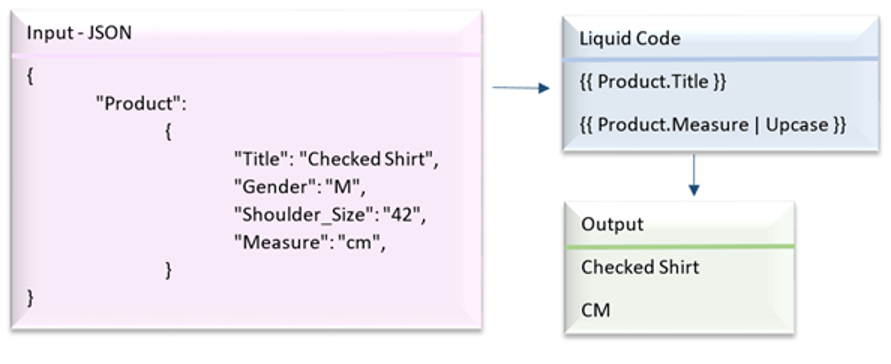Liquid Template: The perfect tool for object transformation
Publish Date: October 7, 2021Founded in 2006 by Tobias Lutke, Shopify has been servicing e-commerce stores through its revolutionary invention, the liquid template. Acting as a backbone of the operation, it acts as a bridge between the web layout and the website data, ergo an HTML file and a data store by allowing access to variables within a template.
Some argue that it is a language template as it has its own syntax, which is easy to read and use, it converts object notations without needing complete knowledge of the data. It is available as an open-source project on GitHub for all aspiring software projects that want to make all of website operations easier-from static site creation to managing complex content. A powerful tool to create any ecommerce website because of its similarity with HTML, it makes it easy to load dynamic data into simple templates which are quick to deploy.
Here we will dive deep into the benefits of the liquid template for an ecommerce business wherein it is possible to access and manipulate data for a Shopify theme development.
How does it work?
One way of thinking is that it is a matter of finding and replacing the data you want in a text editor. The platform searches for the data placeholders and replaces them with data from your store. The final document created is then sent as an HTML browser.
Each liquid file allows one access to certain variables without having to lift even a finger, in turn, gives us access to the entire database to create output without knowing anything about the actual product itself. Using these template variables, one can use it to retrieve data that is not readily available, to populate variables for all the products in a particular collection.
How does Liquid bring business value for enterprises?
There are several business scenarios where Liquid helps derive greater value for the enterprise. Salesforce and Adobe are two companies who already make use of Liquid. Furthermore, the recent adoption of the Liquid language within Microsoft Azure Logic app for object transformation and Power platform for content curation offer the biggest evidence of its value.
In an enterprise for instance, Liquid can be used to crowdsource content curation and moderation, where the need is to provide the end-user with the ability to define and curate templates, while not having the hassles of executing those codes for security reasons. You can also automate document generation or email sending workflow all while keeping performance and scale in mind. Some of the basic use cases in this regard are invoice generation, insurance cover sheets or email campaigns. Finally, they are also used for heavy object transformation including XML to JSON, or XSLT to HTML.
In fact, liquid template provides several options for the new-age developer community in terms of implementation. A .Net developer for example, can leverage liquid template with a few existing frameworks and packages in this space, including DotLiquid and DotLiquid.Mailer.
Let us now understand how Liquid can be leveraged for your enterprise.
Liquid file extensions and delimiters
Liquid files come with an extension typically denoted by ‘.liquid and comprises of constructs including tags, delimiters, loops and payload formats. The ‘{{ }}’ denotes the delimiter output while the percentage delimiters or ‘{%%} denote logic. Essentially, a delimiter can be seen as a piece of code which is ultimately to be replaced by the data when the compilation of themes are sent to the browser.

Object types
There are typically five types of objects in Liquid, where you can assign a String value denoted within single or double quotes e.g., {% assign var_string = “Pineapple” %}.

How to customise Liquid for your business?
Liquid uses a diverse combination of objects, tags and filters that can be used to create a theme. Since it is open sourced, new glitter tags are frequently added to support the HTML language. Simplifying the template and structuring the code can optimise the performance of the language enhancing its usability and increasing its speed. For a B2B marketplace, it is possible to create a flexible configuration on custom layouts using liquid.net, without any requirement of complex code changes.
To ensure future upgrades go over smoothly, it would be best to create a copy of the file instead of making changes in the existing one. The template can be split up into simpler sub-templates to keep configuration simple and readable. These sub-templates can be inserted into the main template whenever needed and allows you to potentially use the older templates if need be.
For modernising your liquid templates, contact YASH Technologies today and create your website with the assistance of YASH experts. If you would like to learn more about liquid templates, their structure and their usage follow the link here and let’s get started!
















